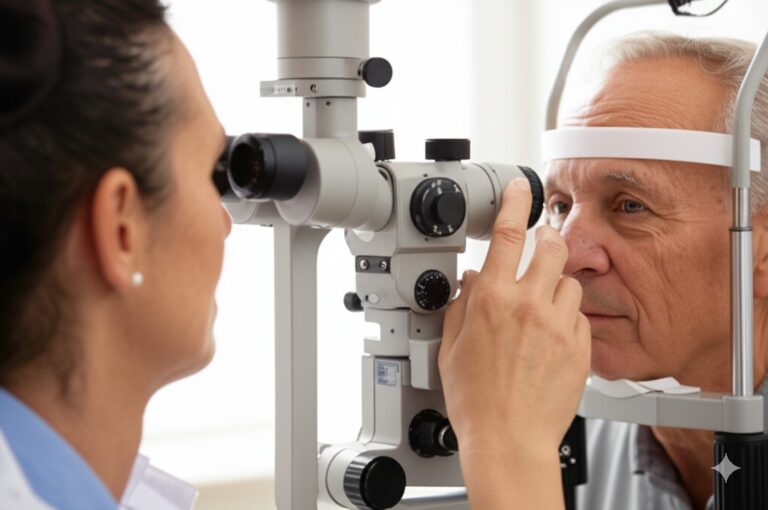Your Journey After Cataract Surgery: A Week-by-Week Guide to Recovery
Cataract surgery is one of the most common and successful surgeries performed today, especially among seniors. Replacing the cloudy natural lens with a clear artificial one (an Intraocular Lens or IOL) can dramatically improve vision and quality of life. While the procedure itself is usually quick, understanding the recovery process helps manage expectations and ensures a smooth healing journey.
Many seniors and their caregivers wonder what recovery looks like day-to-day and week-to-week. This guide from Elderly Care First breaks down the typical timeline and experiences following cataract surgery, helping you know what to anticipate as your vision clears.
Important Note: Every individual heals differently. Your experience may vary based on your overall health, the specifics of your surgery, and your doctor’s instructions. Always follow the personalized advice and schedule provided by your ophthalmologist.
- Learn More About Cataracts: Cataract Solution Complete Guide 2025
Immediately After Surgery (Day 0)
- At the Surgery Center: You’ll rest for a short period after the procedure. Your eye will likely be covered with a protective shield or patch. You might feel groggy from sedation if used. You cannot drive yourself home, so arrange for transportation.
- Initial Sensations: It’s normal to feel some mild discomfort, scratchiness, or a feeling like something is in your eye. Your vision in the operated eye will likely be blurry or hazy initially – this is expected. Some watering is also common.
- Instructions: You’ll receive specific instructions about using prescribed eye drops (antibiotic and anti-inflammatory), wearing the eye shield (especially while sleeping), and activities to avoid. Follow these carefully!
- Rest: Plan to rest quietly at home for the remainder of the day. Avoid strenuous activity.

The First Few Days (Days 1-3)
- Follow-Up Appointment: You will typically have your first post-operative check-up the day after surgery or within a few days. The doctor will remove the shield/patch, check your vision and eye pressure, and examine the eye.
- Vision Changes: Your vision will likely start to improve but may still fluctuate. It might be blurry, hazy, or even seem overly bright initially as your eye adjusts to letting more light in. Colors might appear brighter or have a different tint (often bluish) compared to before surgery – this usually normalizes.
- Eye Drops are Crucial: You’ll begin your prescribed eye drop schedule. Using these drops exactly as directed is vital to prevent infection and control inflammation.
How to Put in Eye Drops Guide - Common Sensations: Mild scratchiness, sensitivity to light, and some watering may continue. Significant pain is not normal – contact your doctor if you experience this.
- Wearing the Shield: Continue wearing the protective shield at night and potentially during naps for at least the first few days (or as directed) to prevent accidentally rubbing or bumping the eye. You might wear protective glasses or sunglasses during the day.
- Activity Level: Avoid heavy lifting (typically anything over 10-15 pounds), strenuous exercise, bending over excessively (keeping your head above your heart), and environments with lots of dust or potential irritants. Light activities like walking are usually fine. Avoid swimming pools and hot tubs.
The First Week (Days 4-7)
- Continued Improvement: Vision often continues to improve gradually throughout the first week. Clarity may still fluctuate slightly from day to day.
- Eye Drop Schedule: Keep up with your prescribed eye drop regimen diligently. Your doctor may start tapering the frequency of some drops towards the end of the week or at your next follow-up.
- Reduced Discomfort: Scratchiness and light sensitivity usually lessen noticeably during this week.
- Activity Restrictions: Continue to follow activity restrictions as advised by your doctor. You might be able to resume light activities like reading, watching TV, and using a computer, but take breaks if your eyes feel strained. Ask your doctor about resuming driving (this depends on your vision meeting legal requirements).
- Protecting Your Eye: Continue wearing the shield at night if recommended. Wear sunglasses outdoors to manage light sensitivity and protect the healing eye. Avoid getting soap or water directly into the eye when showering or washing your hair (tilting your head back helps).

The Following Weeks (Weeks 2-6)

- Significant Vision Improvement: Most significant healing and vision stabilization occurs within the first month. Your vision should become much clearer and more stable.
- Further Follow-Ups: You will likely have another follow-up appointment within this period (e.g., at 1 week and/or 1 month post-op) to monitor healing.
- Eye Drops Tapering: Your doctor will likely instruct you to gradually decrease the frequency of your eye drops until you can stop them completely (usually takes several weeks). Do not stop drops early unless instructed.
- New Glasses Prescription: Once your eye has fully healed and your vision has stabilized (typically around 4-6 weeks after surgery, but sometimes longer), your eye doctor can determine your final prescription for glasses, if needed. Even if you chose an IOL designed to reduce glasses dependence, you might still need reading glasses or glasses for specific distances.
- Resuming Activities: Most activity restrictions are usually lifted within a few weeks, but always confirm with your doctor before resuming strenuous exercise, swimming, or activities with a high risk of eye injury.
When to Call Your Doctor Immediately (Warning Signs)
While complications are rare, contact your ophthalmologist immediately if you experience any of the following:
- Sudden decrease in vision.
- Increasing eye pain (beyond mild initial discomfort).
- Increased redness or swelling of the eye or eyelid.
- Any discharge (pus) from the eye.
- Seeing sudden flashes of light or a shower of new floaters (could indicate retinal detachment).
- Nausea or vomiting accompanied by eye pain (could indicate high eye pressure).
Conclusion: Patience Leads to Clearer Sight

Cataract surgery recovery is generally straightforward and leads to significantly improved vision for most seniors. While the most dramatic healing happens in the first few weeks, full stabilization can take a month or two. Be patient with the process, follow your doctor’s instructions precisely (especially regarding eye drops and activity restrictions), and attend all follow-up appointments.
Before you know it, you’ll likely be enjoying the world with newfound clarity! Elderly Care First wishes you a smooth and successful recovery.






